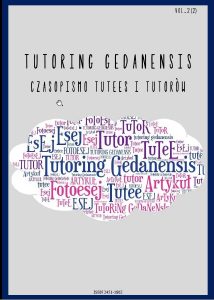Strefa przybrzeżna Morza Bałtyckiego jako filtr
Słowa kluczowe:
strefa przybrzeżna, Morze Bałtyckie, Zatoka Gdańska, różnorodność biologiczna, bioróżnorodność, bentos, eutrofizacjaDownloads
Bibliografia
Almroth-Rossel, E., Edman, M., Eilola, K., Meier, H. E. M., Sahlberg, J., 2016. Modelling nutrient retention in the coastal zone of an eutrophic sea. Biogeosicences,13, 5753–5769.
Asmala, E., Carstensen, J., Conley, D. J., Slomp, C. P., Stadmark, J., Voss, M., 2017. Efficiency of the coastal filter: Nitrogen and phosphorus removal in the Baltic Sea. Limnology and Oceanography, 62(1), 222–238.
Boström, C., Bonsdorff, E., Kangas, P., Norkko, A., 2002. Long-term changes of a brackish-water eelgrass (Zostera marina L.) community indicate effects of coastal eutrophication. Estuarine, Coastal and Shelf Science, 55(5), 795–804.
Boström, C., Bonsdorff, E., 1997. Community structure and spatial variation of benthic invertebrates associated with Zostera marina (L.) beds in the northern Baltic Sea. Journal of Sea Research, 37(1-2), 153–166.
Colombini, I., Chelazzi, L., 2003. Influence of marine allochthonous input on sandy beach communities. Oceanography and Marine Biology: An Annual Review, 41, 115–159.
Díaz, R. J., Rosenberg, R., 1995. Marine benthic hypoxia: a review of its ecological effects and the behavioural responses of benthic macrofauna. Oceanography and Marine Biology An Annual Review, 33, 245–303.
Fenchel, T., 1996. Worm burrows and oxicmicroniches in marine sediments. 1. Spatial and temporal scales. Marine Biology, 127(2), 289–295.
Forster, S., Graf, G., 1992. Continuously measured changes in redox potential influenced by oxygen penetrating from burrows of Callianassasubterranea. Hydrobiologia, 235(1), 527–532.
Janas, U., Szaniawska, A., 1996. The influence of hydrogen sulphide on macrofaunal biodiversity in the Gulf of Gdańsk. Oceanologia, 38(1), 127–144.
Jedrzejczak, M. F., 2002a. Stranded Zostera marina L. vs wrack fauna community interactions on a Baltic sandy beach (Hel, Poland): a short-term pilot study. Part I. Driftline effects of fragmented detritivory, leaching and decay rates. Oceanologia, 44(2), 273–286.
Jedrzejczak, M. F., 2002b. Stranded Zostera marina L. vs wrack fauna community interactions on a Baltic sandy beach (Hel, Poland): A short-term pilot study. Part II. Driftline effects of succession changes and colonisation of beach fauna. Oceanologia, 44(3), 367–387.
Joyner-Matos, J., Predmore, B. L., Stein, J. R., Leeuwenburgh, C., Julian, D., 2010. Hydrogen sulfide induces oxidative damage to RNA and DNA in a sulfide-tolerant marine invertebrate. Physiol. Biochem. Zool, 83(2), 356–365.
Jørgensen, B. B., Bang, M., Blackburn, H., 1990. Anaerobic mineralization in marine sediments from the Baltic Sea – North Sea transition , Mar. Ecol. Prog. Ser., 59, 39–54.
Krantzberg, G., 1985. The influence of bioturbation on physical, chemical and biological parameters in aquatic environments: a review. Environmental Pollution Series A, Ecological and Biological, 39(2), 99–122.
Kristensen, E., 2000. Organic matter diagenesis at the oxic/anoxic interface in coastal marine sediments, with emphasis on the role of burrowing animals [w:] Life at interfaces and under extreme conditions. Springer, Dordrecht, s. 1–24.
Larsson, U., Elmgren, R., Wulff, F., 1985. Eutrophication and the Baltic Sea: Causes and Consequences. Ambio, 14(1), 9–14.
Lastra, M., Page, H. M., Dugan, J. E., Hubbard, D. M., Rodil, I. F., 2008. Processing of allochthonous macrophyte subsidies by sandy beach consumers: Estimates of feeding rates and impacts on food resources. Marine Biology, 154(1), 163–174.
Levy, J., Dethier, M., Lowe, A., 2014. Invertebrate Abundance and Rate of Decomposition in Beach Wrack of Zostera marina and Fucusdistichus, Friday Harbor Laboratories Student Research Papers, 1–13.
McLachlan, A., 1983. Sandy beach ecology – a review [w:] A. McLachlan, T. Erasmus, W. Junk (red.) Sandy beaches as ecosystems, Springer-Science+Business Media, Dordrecht, 321–380.
Mews, M., Zimmer, M., Jelinski, D.E., 2006. Species-specific decomposition rates of beach-cast wrack in Barkely Sound, British Columbia, Canada. Marine Ecology Progress Series, 328, 155–160.
Rasmussen, P. E., Albrecht, S. L., Smiley, R. W., 1998. Soil C and N changes under tillage and cropping systems in semi-arid Pacific Northwest agriculture. Soil and Tillage Research, 47(3-4), 197–205.
Romano, F. B., 2013. Ecology of Macroalgal Wrack on Exposed Sandy Beaches. Rozprawa doktorska van der Heide, T., van Nes, E. H., Geerling, G. W., Smolders, A. J., Bouma, T. J., & van Katwijk, M. M., 2007. Positive feedbacks in seagrass ecosystems: implications for success in conservation and restoration. Ecosystems, 10(8), 1311–1322.
Wȩsławski, J. M., Urban-Malinga, B., Kotwicki, L., Opaliński, K., Szymelfenig, M., & Dutkowski, M., 2000. Sandy coastlines - Are there conflicts between recreation and natural values? Oceanological Studies, 29(2), 5–18.

 Uniwersyteckie Czasopisma Naukowe
Uniwersyteckie Czasopisma Naukowe



